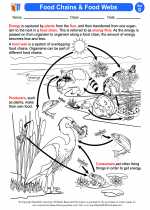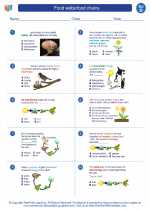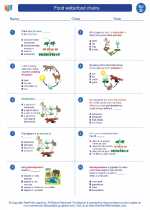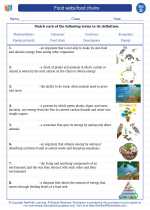Mesozoic Era
The Mesozoic Era is a geological era that lasted from about 252 to 66 million years ago. It is often referred to as the "Age of the Dinosaurs" because it was during this era that dinosaurs dominated the Earth.
Periods of the Mesozoic Era
The Mesozoic Era is divided into three periods: the Triassic, Jurassic, and Cretaceous periods.
Triassic Period
The Triassic period lasted from about 252 to 201 million years ago. It was during this period that the first dinosaurs and mammals appeared. The supercontinent Pangaea also began to break apart during this time.
Jurassic Period
The Jurassic period lasted from about 201 to 145 million years ago. This period is known for the dominance of dinosaurs, as well as the appearance of early birds and marine reptiles such as ichthyosaurs and plesiosaurs.
Cretaceous Period
The Cretaceous period lasted from about 145 to 66 million years ago. It was during this period that flowering plants, modern insects, and more advanced birds and mammals appeared. However, it also marked the end of the dinosaurs, as they became extinct at the end of the Cretaceous period.
Key Events and Features
During the Mesozoic Era, the Earth's climate was generally warmer than it is today. The era also saw the evolution and diversification of many groups of organisms, including reptiles, birds, and mammals. Additionally, the breakup of Pangaea led to the formation of the continents as we know them today.
Study Guide
- What are the three periods of the Mesozoic Era?
- Which period is known for the dominance of dinosaurs?
- What major event marked the end of the Mesozoic Era?
- What were some key features of the Mesozoic Era?
[Mesozoic] Related Worksheets and Study Guides:
.◂Science Worksheets and Study Guides Fourth Grade. Food webs/food chains

 Activity Lesson
Activity Lesson
 Worksheet/Answer key
Worksheet/Answer key
 Worksheet/Answer key
Worksheet/Answer key
 Worksheet/Answer key
Worksheet/Answer key
 Worksheet/Answer key
Worksheet/Answer key
 Vocabulary/Answer key
Vocabulary/Answer key
 Vocabulary/Answer key
Vocabulary/Answer key
 Vocabulary/Answer key
Vocabulary/Answer key
